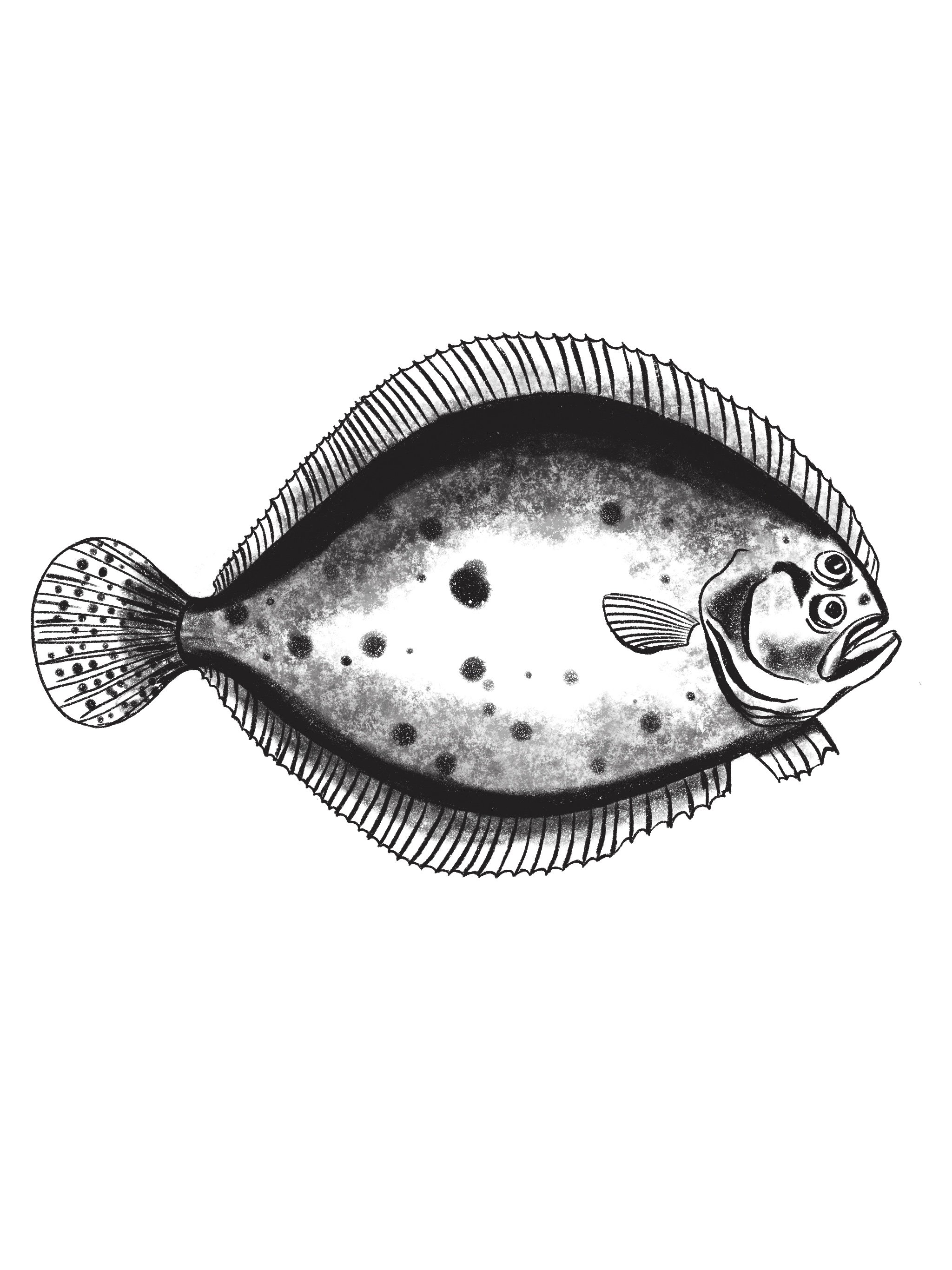
TURBOT
Home | Fish & Recipes | Turbot
Illustrations by Lucie Galand https://www.lalalu.org/
Psetta maxima
'it is a venial extravagance to acquire a turbotiere’
Biology
Turbot can grow up to a metre in length and are found from Iceland all the way to the Mediterranean. They have no scales, but do have bony tubercles on the upper side of their body. Tur is old english for thorny and bot means flatfish.
Unlike most fish, whose eggs sink, turbot eggs contain an oil that makes them buoyant, so they bob around toward the surface of the sea, away from the greedy mouths of the bottom feeders.
Compared to other flatfish, turbot also have large mouths and are pretty voracious in their appetites, happily eating crabs and codlings.
Fishing
Despite their large geographic spread, only in England can they be caught by inshore boats. Their main fishery is around a large swathe of sand banks in the North Sea.
They’re often found in the skate nets. Large specimens go for such big money that we tend not to buy them, they’re destined for restaurants so exclusive, us commoners won’t even know their names. However, we do get some in from time to time.
Eating
Turbot is the king of fish. Roman Emperors, Popes and poshos have all waxed lyrical on these mighty beasts. And rightly so.
Their pearlescent, meaty flesh is second to none. They were traditionally poached in large copper tins, called turbotieres. We haven’t been invited to dinner at a stately home for some time, but these days, they tend to be ‘tranched’ (steaked) and roasted.
The excellent Alan Davidson, in his encyclopaedic North Atlantic Seafood, says: 'it is a venial extravagance to acquire a turbotiere, as I did even before I owned a frying pan’. If only our student days were spent with such erudite gourmands...
If you get it from us, we’d suggest cooking it whole (as ever). And don’t trim anything off it, just wipe it down, season and whack it in the oven. It may seem strange not to tart up such a fine specimen, but your time is much better spent preparing a kick ass sauce- traditionally lobster, ‘if the makings are to hand’ [thanks Alan]. But a beurre blanc would work well too or even a salmoriglio to cut through the richness of the flesh.
Recipes (click to enlarge)



